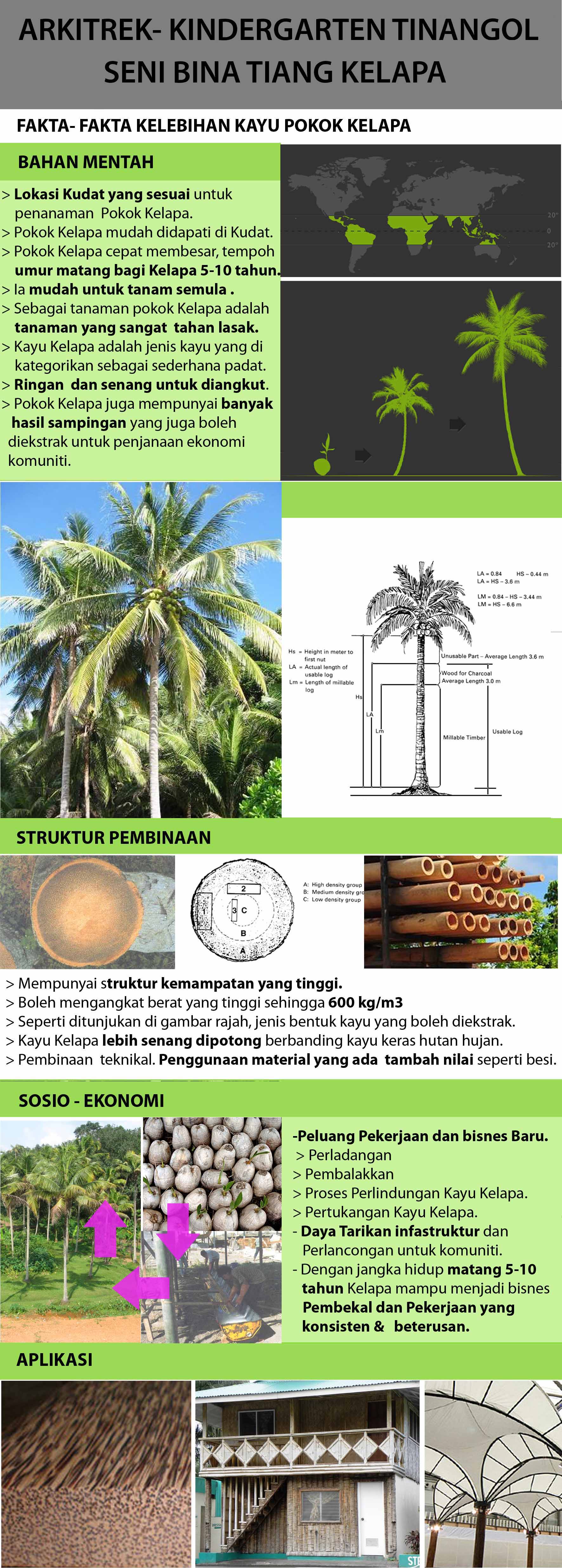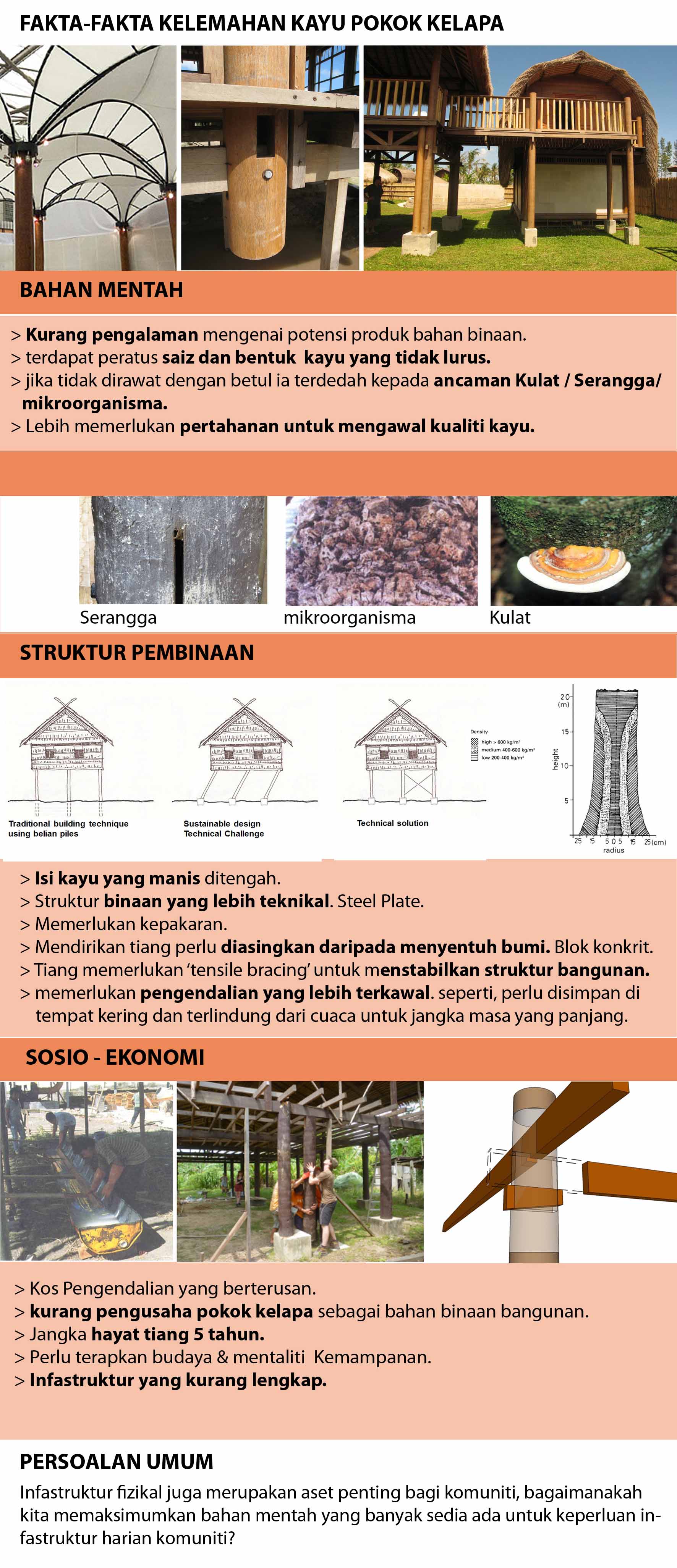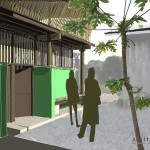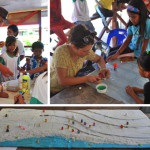Fakta Fakta Kelemahan & Kelebihan Kayu Pokok Kelapa
Using coconut wood in construction of community based construction projects can be a sustainable choice but requires careful design and project management. In our Tinangol Community Centre we failed to continually inform and seek consent to use coconut wood throughout the 3 year construction process. We started off with full consent but practical blunders and protracted construction process eroded support to the point where the community insisted that all coconut posts be replaced with hardwood.
The situation was created by the fact that we had not considered the construction sequence when designing for coconut posts. The slow pace of building on this project resulted in our coconut posts being left standing in the rain for over a year. This may have accelerated decay in the coconut posts to the extent that most of them need replacing.
Luckily we anticipated that the coconut posts may not last as long as other parts of the building and therefore designed them to be easily replaceable. We expect that the replacement posts, now safely protected from the rain, will last for ten years or longer.
Lessons learned:
1. Consider construction sequence when using innovative materials
2. Ensure that building clients are informed of and consent to innovations
3. Educate people in characteristics of unfamiliar materials
4. Don’t be scared to condemn building materials that are no longer fit for purpose
The following poster was prepared by Arkitrek intern, Mohd. Kassim Hashim, to help inform the locals at Kg Tinangol about the use of coconut posts and win back their consent and confidence in coconut posts as a sustainable building material.










would like a translation.